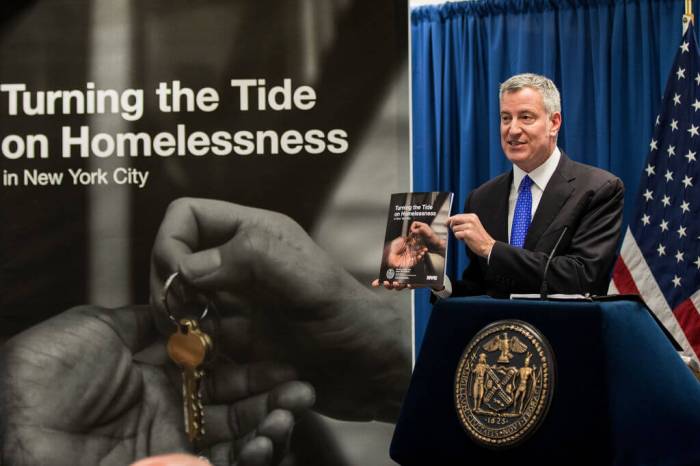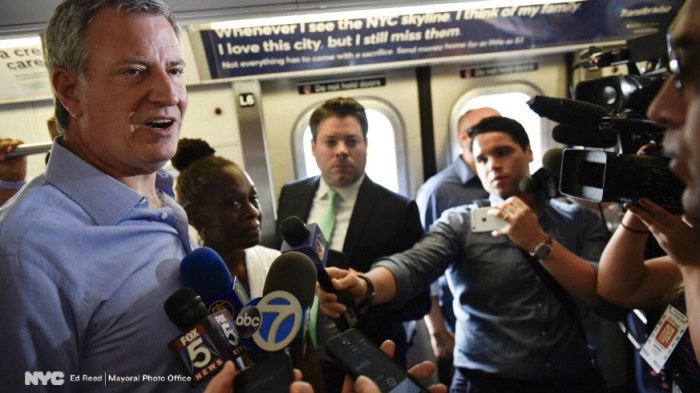The seats along the windows at the Cowgirl Sea Horse restaurant at the corner of Front and Dover streets were filled with diners at lunchtime on Tuesday.
On the other side of the wall, a white line of chalk drawn almost 7 feet off the ground reminds passersby of how high the water reached this corner of the South Street Seaport in lower Manhattan three years ago after Superstorm Sandy struck. RELATED:Sandy damage repairs begin on Riverside Park boat basin
The 2012 storm ravaged much of New York City’s waterfronts and killed 43. Thousands of homes were destroyed and tens of thousands of New Yorkers were hurt or displaced. Many residents in Queens, Staten Island and Brooklyn are still gripped with the lasting effects of Sandy. But so is historic lower Manhattan. The challenges its residents and business community faced — like in other parts of the city — transformed over time.
Still, leaders in the community fear the next storm and worry about the speed with which local and state government are moving to keep a repeat of 2012 at bay for a part of town often thought of as a tourist attraction. “People don’t always see the historic nature of the neighborhood,” local Councilwoman Margaret Chinsaid. “Compared to other neighborhoods greatly affected, we also faced a lot of challenges. We want to make sure we get our fair share.” RELATED:New designs for resiliency post-Superstorm Sandy unveiled Marco Pasanella, whose wine store on South Street still has a fading white line along the brick interior wall where the water hit, praised the city’s long-term commitment.
“The hard part for me is I’m standing here three years later and I’m really no more prepared than I was the day before Sandy,” Pasanella said.
An active member of the local community board, Pasanella said City Hall and Albany face a nuanced problem in a complicated neighborhood.
Whitney Barrat, director of the Old Seaport Alliance — which came about shortly after Sandy struck as a way to promote the neighborhood’s commercial vitality — noted that unlike outer-borough neighborhoods savaged by the storm that could rebuild, the historic status of the seaport made the community’s efforts that much harder. RELATED:EXCLUSIVE: Surviving Superstorm Sandy at The Water Club
“After Sandy, there were so many challenges that people who are flooded faced,” Barrat said. “These buildings are historic — there’s so much work and money that goes into rebuilding and renovating.” Like with most disaster recovery and infrastructure projects, the seaport’s community members constantly hear of money coming in at various levels and for different specific projects.
On top of some $7 million from D.C. and Albany, Mayor Bill de Blasio announced in August the city would invest a total of $108 million on lower Manhattan, a commitment that he told reporters would show the federal government that the area was a priority for the administration and worth more funding. On Wednesday, Dan Zarrilli, director of the mayor’s recover and resiliency office, sent a letter to the federal Department of Urban Development specifically asking for $500 million for its “game-changing” application to protect and connect residents during extreme weather. RELATED:Using garbage containers as a Manhattan storm barrier
Besides rebuilding and renovating, the seaport has also been a site of new development. In 2014, most of the building that stood at Pier 17 for almost 30 years was torn down. In its place, the Texas-based Howard Hughes Corporation plans to erect a new mall raised up 5 feet to meet resiliency codes. In fact, all of Howard Hughes Corporation’s projects have resiliency in mind, said the seaport’s general manager Phillip St. Pierre.
St. Pierre added that while similar efforts will and have been made for projects — including the former home of the Fulton Fish Market the nearby Tin Building, as well as a new residential building — to sit above the flood plain. “If we ended up experiencing another storm, we’ll be in much better shape to bounce back from it,” he said.
However, Manhattan Community Board 1 Chair Catherine McVay-Hughes said she is still left wondering when residents all along the lower tip of Manhattan can expect to fill out the bigger picture of resiliency. “The bottom line is it’s been three years,” she said. “There’s been a lot of talking about solutions. Everyone here would like the government to move from talking to implementing.” Correction: An earlier version of this story said a residntial tower was planned for the site of the Tin Building. This story has been updated to reflect that neither the location nor the height of the residential building planned by the Howard Huges Corproation to be built at the seaport has been finalized.

















